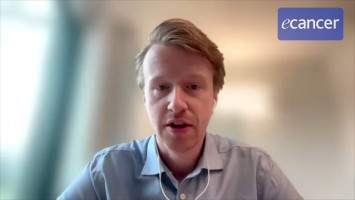The Bfore trial is a two-arm study that investigated bosutinib, a second generation tyrosine kinase inhibitor, compared to imatinib as a first proof of principle drug in that disease and the comparison between the two was with the aim to show that bosutinib is superior over imatinib, both regarding efficacy and also tolerability, obviously, that was the goal. But the primary endpoint was an efficacy endpoint, that is a better molecular response at twelve months. The data that I was presenting on Saturday at the ASH meeting were a five-year follow-up of that study.
What were the methods?
It was a randomised trial that included more than 500 patients with newly diagnosed chronic myeloid leukaemia that, as I said, were newly diagnosed. So that was their first line treatment and patients were randomised one to one into either 400mg of bosutinib once daily as an oral tyrosine kinase inhibitor or imatinib, also 400mg once daily as a tablet. The study actually investigated efficacy during that five years but also tolerability of both drugs.
What did you find?
The result that was already presented a couple of years earlier was that after twelve months the primary study endpoint was met. So bosutinib was superior over imatinib regarding major molecular response by twelve months. That was already shown, so the primary study endpoint was reached.
The aim of this analysis, five-year analysis, of the study was to figure out whether also the deeper responses that we see under tyrosine kinase inhibitor treatment in CML would turn out to be significantly different between the two treatment arms, and that was the case. We could see that both MR4.5 but also MR4 and MR3 were actually significantly better with bosutinib as opposed to imatinib in that study.
What do you think could be the clinical impact of the study?
The two most important impacts are… actually, maybe three. Number one, that to reach a deep molecular response is a prerequisite for a patient eventually being eligible for treatment discontinuation approaches, that is stopping tyrosine kinase inhibitor treatment and hoping that the patient would not relapse. So if you don’t reach deep molecular responses that are sustainable over some time then the patient does not become eligible for a treatment discontinuation approach and that’s one of the ultimate goals we nowadays have in CML. So that’s number one.
Number two is maybe not a goal but an observation that we made in that study, is that obviously patients with a high so-called risk score profit more from bosutinib as opposed to imatinib than the ones that have a lower so-called risk score. That doesn’t mean that second generation TKIs are not also in low risk patients of benefit, but the most striking difference between the two arms was observed in high risk and intermediate risk patients. That’s the second major important observation.
Then if you look at a drug like that in long-term treatment then obviously toxicity is very important. What we could observe is that we didn’t see anything unexpected showing up. However, we put a lot of effort on studying side effects in both treatment arms that eventually take longer to show up, such as cardiovascular toxicity but also pleural effusions. We did some very detailed analysis on the frequency of these events and the different gradings and also on the fact how those side effects, if they occur, are being dealt with. So in how many cases do the patients need to stop treatment, in how many cases or percentage of patients can you re-expose the patient to the drug and in how many percent of those cases is re-exposure successful. The results here were rather encouraging.
One, maybe really important, observation was, for example, since there is a high frequency of diarrhoea in patients with bosutinib initially, more than 70% experience diarrhoea in the initial phase of treatment, we could now show that diarrhoea was not a significantly different reason for treatment discontinuation as opposed to the patients that were treated with imatinib. So in both arms the rate of patients discontinuing treatment with either bosutinib or imatinib because of diarrhoea was the same. That’s something that’s maybe not that expected in the scientific community but we could show that quite clearly as part of this long-term analysis.
The other thing that is important is that cardiovascular toxicity is rare, it’s almost as rare for bosutinib as for imatinib. There is a little bit of different signals in cardiovascular toxicity but this needs to be analysed in more detail. Nevertheless, overall the incidence of those toxicities seems to be rather low in both treatment arms. When we check this in a multivariate approach the treatment arm did not show up as a risk factor for cardiovascular toxicity, suggesting that the arms are not significantly different.
Is there anything else that you would like to add?
What I would probably like to add is that one thing that’s not that fortunate with the study is that it was the final report on that study after five years. So what we do not know yet is whether treatment free remission is actually a goal that can be more successfully achieved with bosutinib as opposed to imatinib. We have a surrogate parameter that we looked for and that was sustained, MR4. So an MR4 that lasts for more than two years as a surrogate parameter for patients potentially becoming eligible for TFR approaches and there was a difference but that was not yet significant, probably because of not long enough follow-up and not enough events.
So I would love to see this study continue, I would love to see a follow-up study to that study that investigates all these parameters and also even longer long-term safety aspects of the drugs in more detail. But that does not seem to happen, which I think is really unfortunate given the great results that we’ve seen so far.








